The Verani Group occupies a 1,500 sq. ft. laboratory located on the first floor of the Schaap Building. The building underwent a $ 76 million renovation and state-of-the-art installations include bench space to house 10 researchers with individual fumehoods. Attached to the lab space there is a “chemical-free” office area with individual working stations connected to a kitchen-like facility.
The Synthetic Lab is currently equipped with labware and glassware, Schlenk (air-free) glassware, five argon/vacuum lines served by Edwards pumps, three rotary evaporators, a double-length MBraun glove box equipped with a -35 oC freezer, optical microscope, ovens, three precision balances, two melting point apparatuses, a solvent purification system IT-SPS 400 for acetonitrile, tetrahydrofurane, ethyl ether, dichloromethane, and hexanes, pH meters, and a Parr hydrogenation apparatus.
Routine characterizations are performed on a Cary 50 UV-visible spectrophotometer, a Shimadzu UV-1800 UV-visible spectrophotometer, a Shimadzu UV-3600 UV-VIS-NIR spectrophotometer, a Tensor 27 infrared spectrophotometer, a B.A.S. 50W potentiometer, and a CHI 600E potentiostat. A CX-100 dry shipper is available.
Catalytic dihydrogen and dioxygen evolution studies include the determination of turnover numbers (TONs) via a Gow-Mac 400 isothermal, thermal conductivity detector (TCD) gas chromatograph. Bulk electrolysis is done using either the B.A.S. 50W or the CHI 600E potentiometers. The rate of oxygen evolution can be monitored using a YSI Clark-type electrode. All evaluations rely on high-accuracy weight measurements needed for the catalysts and are measured in two Mettler-Toledo XP-105 balances with an accuracy of 0.01 mg.
Film deposition and studies are performed on a modular KSV mini trough that allows for studies on monolayers and Langmuir-Blodgett films. A KSV Optrel BAM 300 Brewster Angle Microscope (BAM) equipped with laser and a CCD camera provides real-time images on Langmuir films at the air/water interface. The final surface-oriented instrument is a KSV SPOT1 compact surface potential measuring instrument based on a non-destructive head capacitance method to study composition, orientation and interactions of the film studied. Furthermore, the infrared spectrum of the deposited films can be recorded using infrared reflective/absorbance spectroscopy (IRRAS).
This set-up allows the P.I. and his group to develop in-situ from organic and inorganic synthesis, inert-atmosphere studies, spectroscopic, electrochemical, to spectroelectrochemical studies and a host of surface-related techniques. Heavy instrumentation is available in the Lumigen Instrument Center facility.
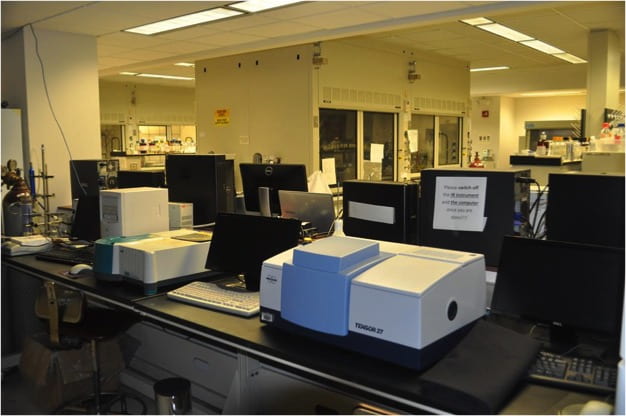
Spectroscopy bench 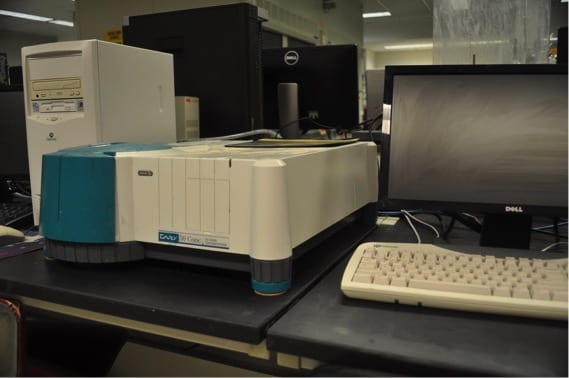
Cary Spectrophotometer for Spectroelectrochemistry 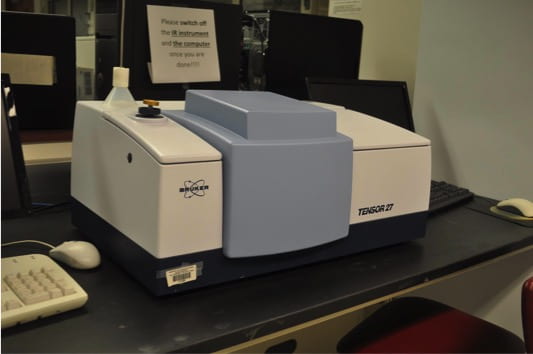
Bruker IR spectrophotometer
with IRRAS capability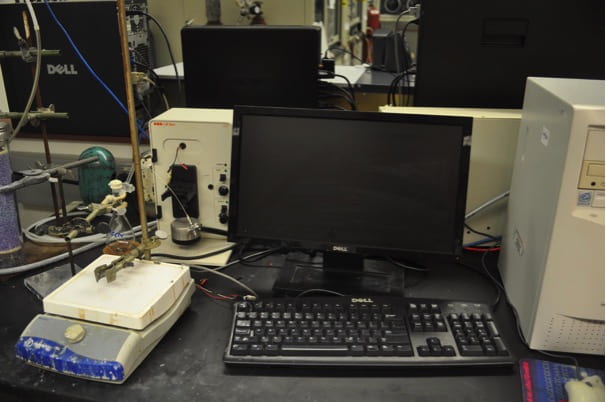
Veteran BAS potentiometer for
bulk electrolysis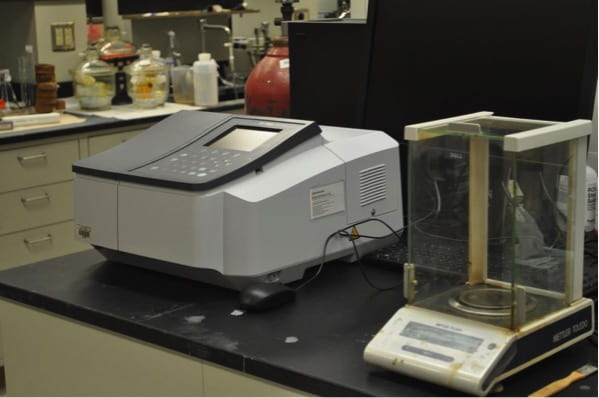
Routine Schimadzu UV-visible spectrophotometer 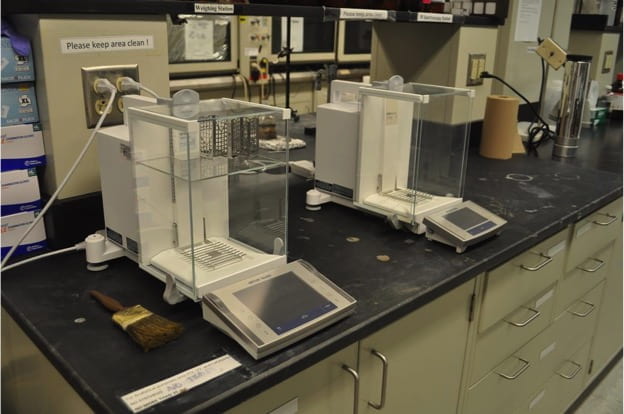
Precision balances 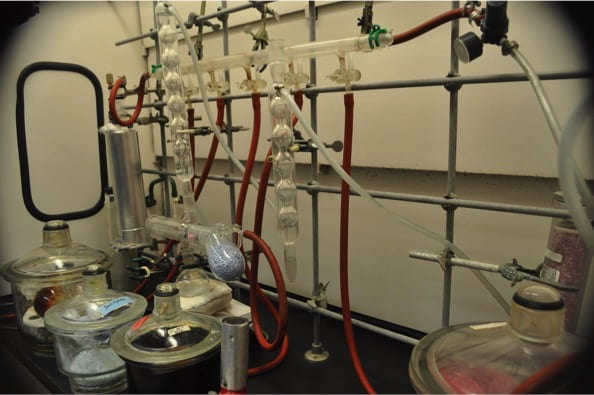
Synthetic lab 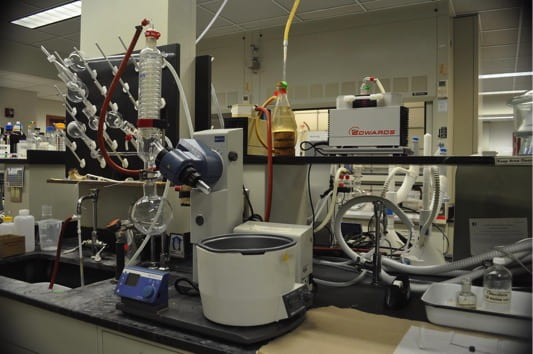
Synthetic lab 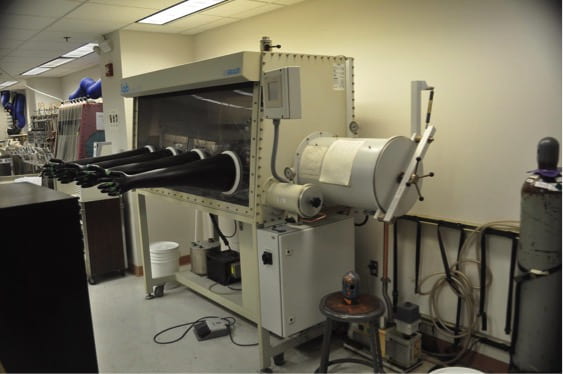
Mbraun glovebox 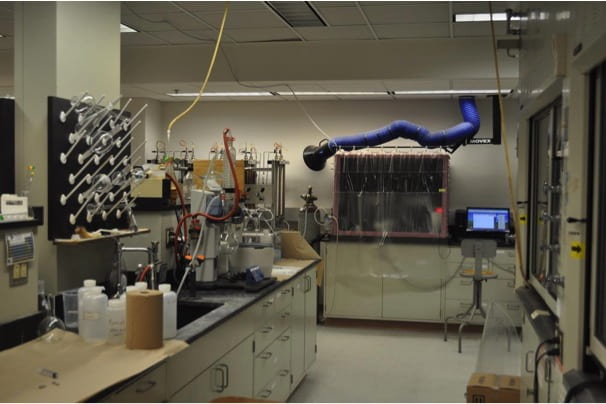
Synthetic lab 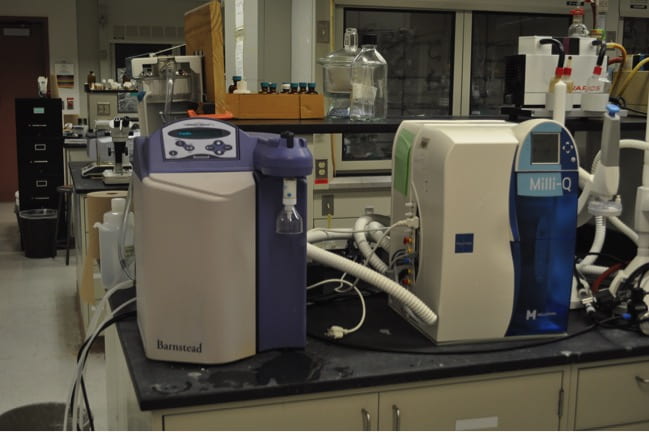
Water purification system 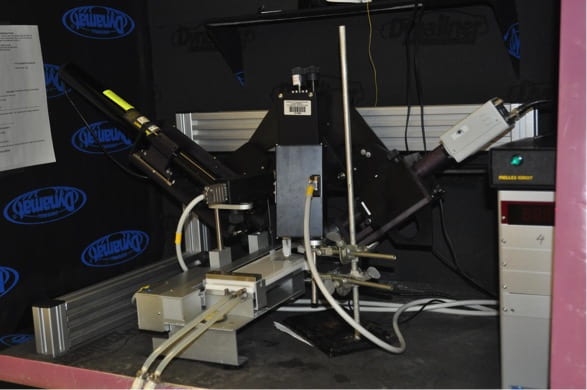
Mini-trough and BAM microscope 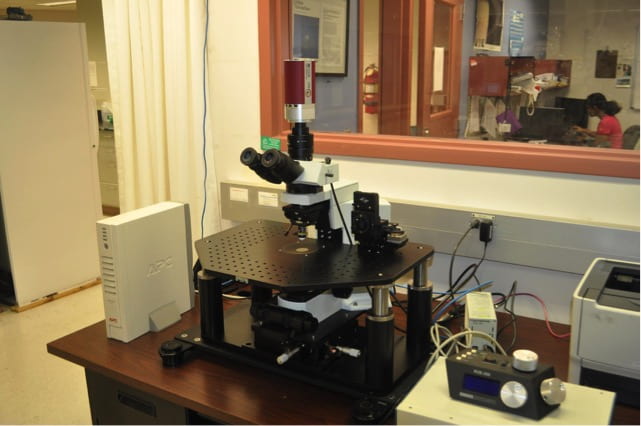
Visible microscopy workstation 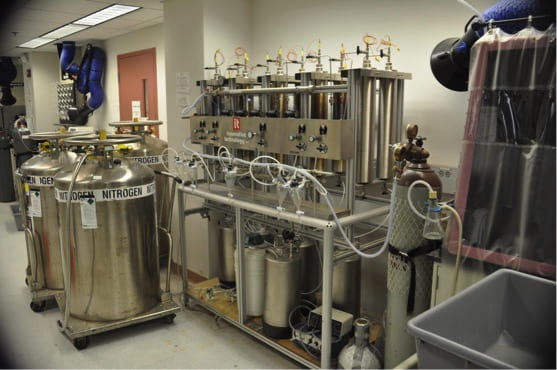
IT solvent purification system 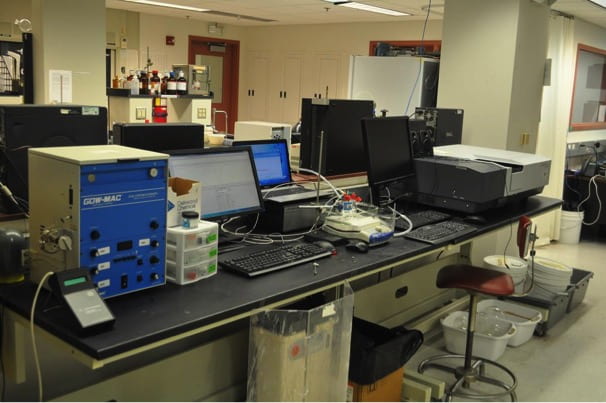
The electrocatalytic bench 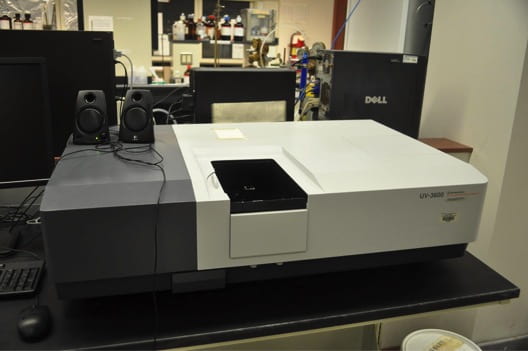
UV-3600 UV-visible-nIR
spectrophotometer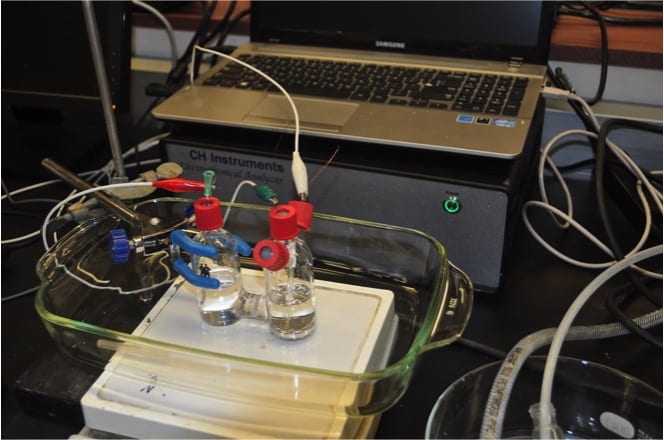
Electrocatalytic workstation 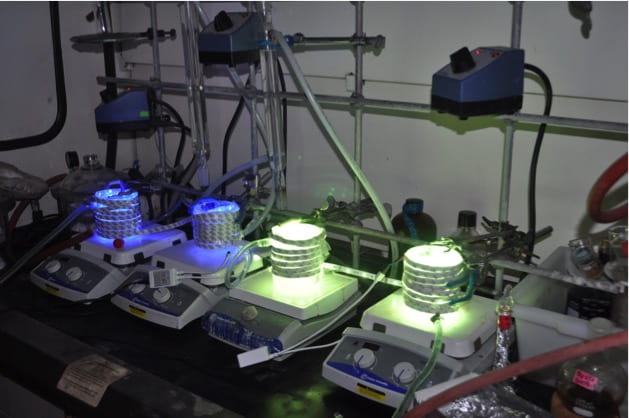
Photocatalytic workstation 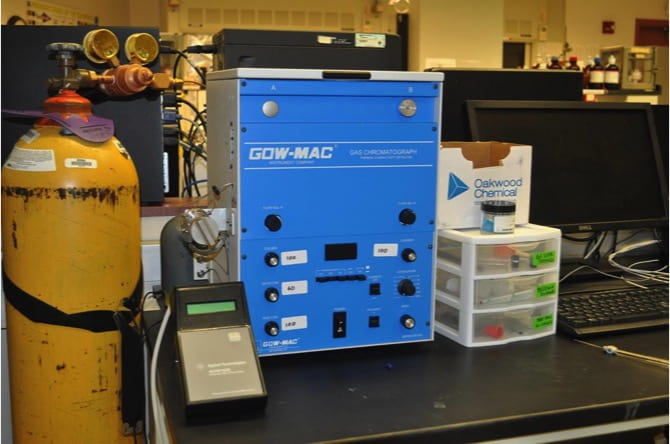
Gow-Mac GC-MS for
H2 and O2 detection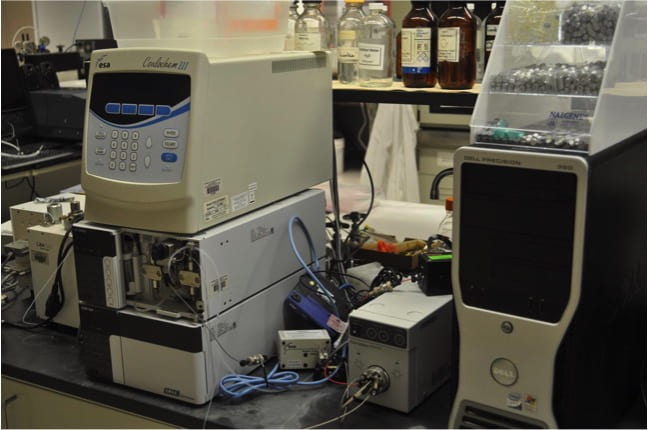
HPLC
